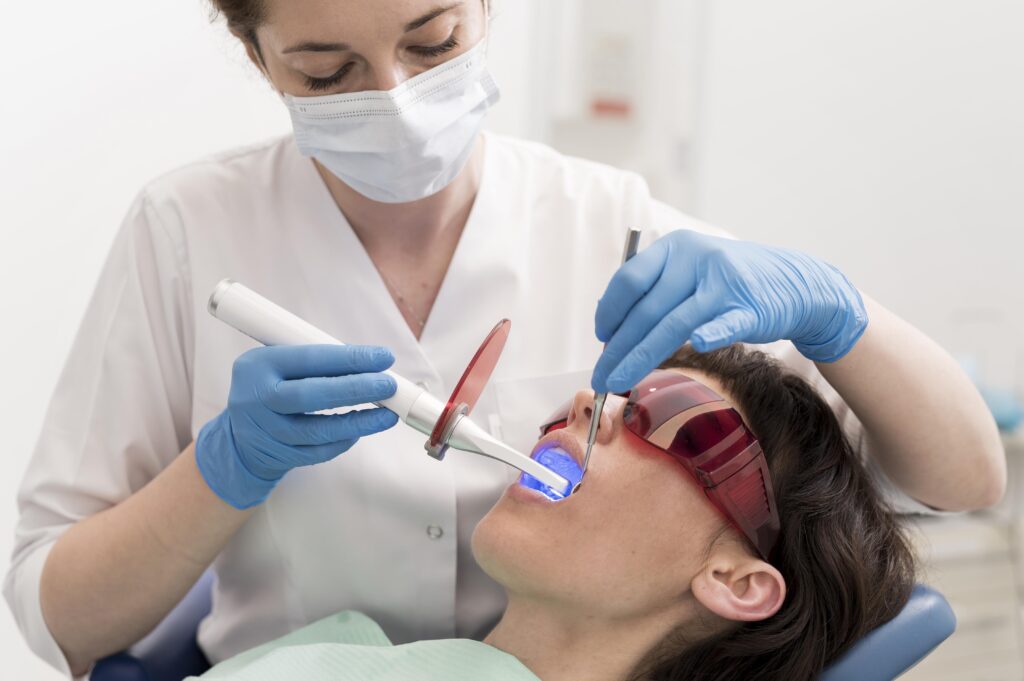Key Takeaways
- Veneers are Durable but Not Immune: Porcelain is strong and stain-resistant, but underlying teeth and gums change over time, affecting appearance and fit.
- Common Issues After Five Years: Edge discoloration, gum recession, small chips or cracks, loose bonding, and loss of shine are the frequent concerns.
- Daily Habits Matter: Avoid chewing ice, pens, or nails, use a night guard if you grind your teeth, brush and floss gently, and rinse after staining foods or drinks.
- Regular Dental Checkups are Essential: Visiting the dentist for check-ups and cleanings helps to catch little problems before they get worse.
- Replacement Is Sometimes Necessary: Veneers typically last 10–15 years; replacement may be needed for visible edge issues, large chips, weakened bonding, or shifting teeth.
Porcelain veneers can hold up beautifully for a decade or more. But once you cross the five-year mark, little problems often start to show, chips, dullness, or gum changes. Most of these problems come from habits patients neglect, not the porcelain itself. With steady care and a dentist who checks in regularly, you can stretch the life of your veneers far longer than most people think.
When people first get porcelain veneers in Oxnard, the excitement is real. The smile looks brand new, confidence jumps, and maintenance feels simple. Fast-forward five years, though, and some Oxnard patients notice changes: a faint line where the veneer meets the tooth, gums that don’t sit where they used to, or a chip from that one time they chewed on ice. At Puri Dentistry, we’ve seen these patterns again and again, and the truth is almost always the same: the veneers are fine, but the upkeep hasn’t kept pace.
Why Veneers Don’t Stay “Perfect” Forever
Porcelain is tough, no doubt. It resists stains better than natural enamel. But veneers live on natural teeth, and those teeth are still subject to change. Gums recede, teeth shift slightly, and everyday habits slowly leave their mark.
Take coffee, for example. The porcelain won’t darken, but the natural tooth beside it might. Or think about clenching your jaw in traffic; tiny forces add up and can weaken the bond over time. Veneers aren’t fragile, but they’re not indestructible either.
What We See Most Often After 5+ Years
By the five-to-seven-year window, a few issues start showing up in our Oxnard patients:
- Discoloration at the edges. Teeth underneath darken just enough that the veneer border becomes visible.
- Gum recession. As gums pull back, the line between veneer and tooth shows.
- Small chips or cracks. Usually caused by grinding, chewing ice, or opening a package with teeth (yes, it happens).
- Loose bonding. Adhesive weakens slowly, especially if patients skip regular checkups.
- Loss of shine. Porcelain doesn’t stain, but it can look dull without professional polishing.
These changes don’t ruin veneers right away, but they chip away at the “flawless” look patients love.
Habits That Make Veneers Last
Here’s where a lot of people slip up: they treat veneers like a permanent fix. They’re not. They need daily and professional attention.
- Brush and floss like normal, but avoid gritty whitening toothpastes.
- If you grind your teeth (many people in Oxnard do and don’t realize it), wear a night guard.
- Don’t chew pens, nails, or ice. Even porcelain has limits.
- Rinse after coffee or wine. The porcelain stays bright, but your natural teeth and gums will thank you.
- Keep your regular cleanings, and polishing makes veneers look almost brand new again.
Think of it less as “extra work” and more like protecting an investment.
Why Checkups Matter More After Five Years
Patients sometimes think, “I already paid for veneers, why do I need more appointments?” Here’s the answer: teeth and gums change. A veneer that fits perfectly in year one may sit differently by year six.
Routine visits allow us to:
- Polish away surface dullness.
- Adjust your bite if it’s shifting.
- Spot early bonding issues before a veneer pops off.
- Catch gum changes early, when they’re easier to manage.
Skipping these visits is like skipping oil changes on a car; you might not notice right away, but problems build up under the surface.
When Veneers Really Do Need Replacing
No veneer lasts forever. The average lifespan is 10–15 years, though some of our patients in Oxnard stretch past that with excellent care. Replacement usually comes into play when:
- Gum recession makes the edge obvious.
- A chip or crack is too large to polish smooth.
- The bonding weakens, and the veneer feels loose.
- Teeth shift, so alignment no longer looks natural.
The good news? Replacing veneers is easier the second time around. Patients already know the process, and updated materials often look even better.
Final Takeaway
After five years, porcelain veneers don’t usually fail, but little signs of wear show up if maintenance is neglected. Edge discoloration, gum shifts, and tiny chips are the most common culprits. The solution isn’t complicated: stick to good habits at home, protect against grinding, and don’t skip professional cleanings.
At Puri Dentistry, we help Oxnard patients not just get veneers but keep them looking beautiful for the long run. With steady care, your smile can stay as fresh at year ten as it was the day your veneers were placed.
Porcelain veneers in Oxnard are an investment. To get the most out of them, you need to take care of them consistently. With proper care, they can last for many years.





